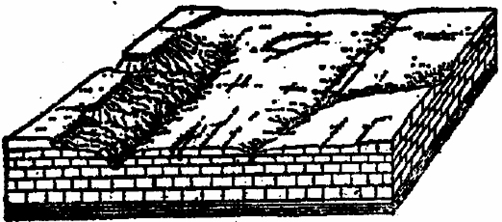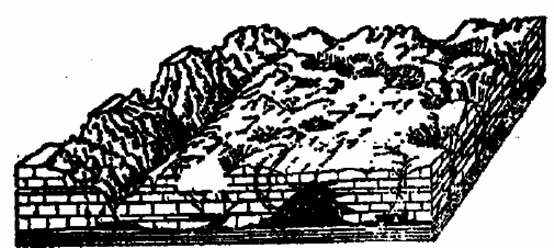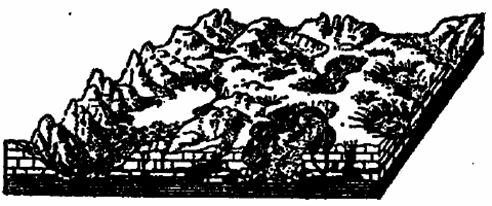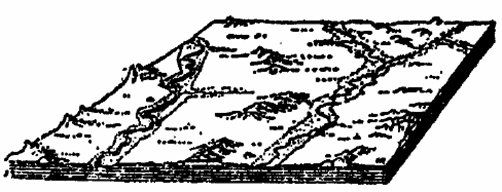An ideal mode for the development of karst landform
Under the unchanged climatic and geological conditions, starting from the raised limestone highland, development of karst landform can be in the ideal sequence of infancy→youth→maturity→old age, and there are certain landform combinations at different stages.
(1) Infancy.Soluble rocks are bare, surface running water begins corrosion on soluble rocks, and there are often clint and lapie and small number of doline on the ground.
(2) Youth. The river further cuts down and most of surface water are converted to underground water. At this period, doline, sinkhole, dry valley, blind valley and corrosion depression are developed widely, underground karst caves are also developed well, and there are many underground rivers.
(3) Maturity. Surface rivers are blocked by lower impermeable strata, or the surface river stops down-cutting, karst cave is further widened, the roof is collapsed, and many underground rivers are converted to surface rivers; at the same time, solution depression, dissolution basin and fenglin are developed.
(4) Old age. When the impermeable strata is outcropped on the ground, the ground level is close to the local base level of erosion, the surface hydrologic network is developed, the broad plain is formed, and some isolated peaks and residual hills are left over on the plain.

















